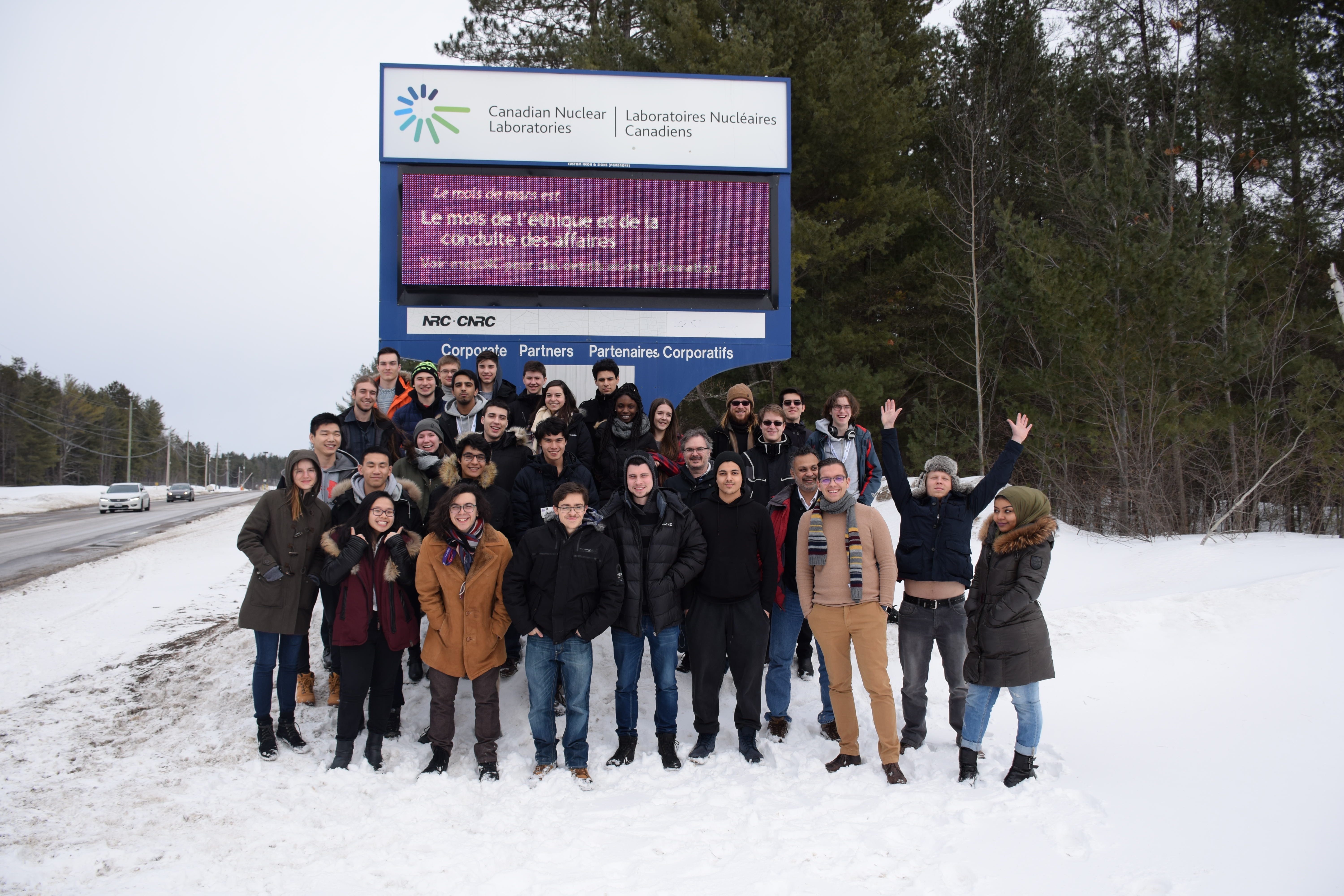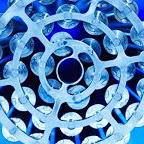Ottawa & Chalk River Student Trip 2017
March 14th - 15th, 201727 students and 3 faculty members from the Science Program will spend two days during the March Break visiting labs at the Transportation Safety Board (TSB) and the National Research Council (NRC) in Ottawa, and the Canadian Nuclear Laboratories (CNL) in Chalk River. The visits will expose students to world-class research facilities and the scientists and engineers who work in them.
Project Update
This year 32 students and 3 faculty members participated in the 5th Science Program trip to visit facilities at the National Research Council (NRC) and the Transportation Safety Board (TSB) in Ottawa, and the Canadian Nuclear Laboratories (CNL) in Chalk River Ontario. This was the largest trip yet in terms of participants and once again students got to see science and engineering at work in state-of-the-art facilities that are not open to the public. The first day featured visits by three different groups to 10 different sites at the NRC and TSB. The day ended with an interactive talk about activism in science given by Kathleen Walsh – Executive Director of Evidence for Democracy.
On day 2, students arrived at CNL facilities in Chalk River where they were given a presentation of the future of CNL and in four groups were given tours of 12 different labs.
The facilities visited included: • Canadian Photonics Fabrication Centre (NRC): Students were given an introduction to photonics and a tour of a world-class manufacturing and development facility for photonic devices (telecommunication and computational chips/fibers that use light instead of electrons). This facility was great in that it exposed students to an ultra-clean environment that services Canadian industry.
• Ocean, Coastal and River Engineering Labs (NRC): In contrast to the ultra-modern facilities of the CPFC this lab was a great look at large scale model testing and engineering. This site visit included an overview of scale model testing along with six testing pools – including one that was half the size of a football field, one that could simulate ocean waves over a meter tall and one that was in a giant refrigerator to simulate ice.
• Standards and Measurements Lab (NRC): This is the facility where Canada maintains and develops official standards. The group saw the mass standards lab that includes Canada’s official kilogram (made of $120,000 pure platinum), the official time clock for Canada (one of several atomic clocks), and the Watt balance that is currently the most sensitive instrument on the planet for measuring Planck’s constant and the source for the leading candidate for a new standard kilogram measurement for the world.
• Flight Research Labs (NRC): Students were given an extensive tour of the flight hangar and research aircraft used by the NRC to conduct and support research in fields such as flight dynamics, aircraft certification, aircraft fuel emissions and alternative fuel usage. The aircraft viewed are an impressive mix of large and small, fixed and rotary wing aircraft and the diversity of skills and backgrounds required to conduct the research and support the facilities is impressive.
• Transportation Safety Board (TSB): Students were presented with a video presentation on the mandate of the TSB and the kinds of work done at the facility. Students also toured several labs including the flight-box recovery labs, the electronics testing facility, the materials analysis labs (featuring state of the art scanning electron microscope technology) and the storage facility that housed several wrecks from on-going investigations.
• Printable Electronics (NRC): Students were given an overview of the recent developments in the new field of printable electronics and shown facilities that can print/etch electronic circuitry onto a variety of media – including flexible membranes like skin and paper. This is a field in the very early stages of development and it was the first time Dawson visited this lab.
• Carbon Nanotubes (NRC): Students were given an overview of carbon nanotube science and its potential for incredible advances in the field of materials and shown the facilities that manufacture and research them. This field involves a diversity of subject expertise advanced chemistry and it was the first time Dawson visited this lab.
• Chalk River Labs of the Canadian Nuclear Labs (CNL): Students were separated into four groups according to their interest: 1) Physics, 2) Energy, and 3) Chemistry, and 4) Health & Environment. Each group visited 3 different labs and interacted directly with the scientists, technicians and/or engineers who work in those labs and facilities. Several highlights of these visits include an engineering lab that solved a problem with the CANDU reactor design involving Calandria tube spacers and their migration over time by using resonant vibrations and vibrational nodes – something that had been covered in one of our main physics courses (203-NYC) only weeks before. Another example includes a visit to a facility were passive cooling system designs for reactor cores are being investigated. These systems don’t rely on external power but use the properties of thermodynamics and if used in the reactors in Fukishima, Japan would have averted the disaster that followed the tsunami and flooding in 2011.
In addition to the tours of research and development facilities, the trip this year featured a guest speaker at the hotel in the evening of the first day. This was an important addition to the trip this year because it got the students to think about the broader role of science within society. The guest speaker was Kathleen Walsh – Interim Executive Director of the not-for-profit organization Evidence for Democracy (https://evidencefordemocracy.ca/en). Evidence for Democracy (E4D) is a leading fact-driven, non-partisan, not-for-profit organization promoting the transparent use of evidence in government decision-making in Canada. In 2012, the role of evidence-based public policy was thrust into the spotlight as never before by the diminishing role of evidence in government decision-making. E4D banded scientists across the country in nationwide ‘Death of Evidence’ rallies and demanded transparent evidence-based decision-making for a strong democracy and for the well-being of all Canadians.




